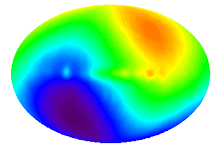Autophagy and the Integrated Stress Response
Eukaryotic cells must adapt continuously to
fluctuations in external conditions, including physical parameters such as
temperature and ultraviolet light; chemical cues such as ion concentrations,
pH, oxygen tension, redox potentials, and metabolite concentrations;
extracellular signals such as contact-dependent signals, hormones, cytokines,
and neurotransmitters; and microbial pathogens. Beyond a certain threshold,
such fluctuations are considered “stresses,” meaning that the cell's response
to this stress determines whether it can function properly and survive.
Mitochondrial Damage
Cells must remove damaged mitochondria to prevent the
accumulation of ROS. This process of mitochondrial quality control is mediated by
mitophagy, the selective autophagic removal of mitochondria. Considerable
advances have been made in understanding the mechanisms by which damaged
mitochondria are targeted for autophagy, as well as the functional significance
of mitochondrial quality control in preventing aging, neurodegenerative
diseases, and other pathologies.
In response to potentially lethal stress or damage,
mitochondrial membranes can be permeabilized through multiple distinct
biochemical routes. Indeed, mitochondrial membrane permeabilization (MMP)
constitutes one of the hallmarks of imminent apoptotic or necrotic cell death
Integration of Autophagy and Other Cellular
Stress Responses
The integration of autophagy and other
cellular stress responses can be conceptualized in the framework of three broad
concepts. First, a single type of stress stimulus elicits a variety of signals
that trigger distinct cellular responses (one of which is autophagy) that
cooperate for the sake of optimal cellular repair and adaptation. Second, distinct
stress responses are often integrated through the ability of a single molecular
event to stimulate multiple adaptive pathways (one of which is autophagy).
Third, distinct cellular stress response pathways, including autophagy,
mutually control other stress response pathways.
(1) redox stress, which induces
transcriptional reprogramming through HIF, NF-κB, and p53 activation; elicits
the UPR; and stimulates both general and selective autophagy; (2) hypoxia,
which induces adaptive responses including the transcriptional activation of
angiogenic and cytoprotective cytokines in parallel with autophagy stimulation;
and (3) DNA damage, which elicits nuclear p53 translocation, cell-cycle
checkpoint activation, cell-cycle arrest, and autophagy.
Key Cellular Stress Response Networks(A)
Particular stress stimuli (e.g., oxidative damage, hypoxia or anoxia, nutrient
starvation, ER stress) can elicit different responses that cooperate to achieve
optimal cellular repair and adaptation. A diverse range of stressors activate
interconnected cytoprotective mechanisms able to modulate autophagy at
different levels, such as transcriptional reprogramming, protein modifications
(phosphorylation, acetylation, etc.), or cell-cycle modulation.(B) Autophagy
inhibition and stress. Autophagy impairment leads to the accumulation of
damaged proteins and organelles, which in turn can elicit cellular stress.
Moreover, disabled autophagy can increase the abundance of p62, resulting in an
enhanced activity of NF-κB, which leads to enhanced inflammation. By contrast,
p62 accumulation leads to the activation of Nrf2 transcription factor and in a
consequent increase in the expression of stress response enzymes.(C) Mutual
exclusion between autophagy and apoptosis. Autophagy, as a cytoprotective pathway,
eliminates potential sources of proapoptotic stimuli such as damaged
mitochondria, thereby setting a higher threshold against apoptosis induction.
By contrast, the apoptosis-associated activation of proteases such as calpain
and caspase-3 may destroy autophagy-specific factors (Atg4D, Beclin 1, or
Atg5), thereby suppressing autophagy.
Hypoxia and Anoxia
Hypoxia and anoxia (with oxygen
concentrations <3 a="" and="" anoxia-induced="" autophagy="" both="" cause="" depends="" different="" factor="" hif="" hypoxia-induced="" hypoxia-inducible="" independent="" is="" mechanisms.="" o:p="" of="" on="" respectively="" through="" variety="" while="">
HIF is a heterodimer of a constitutive β
subunit and an oxygen-regulated α subunit that only becomes stabilized (and
hence expressed) when oxygen concentration declines below a threshold of ∼5%. Upon moderate hypoxia (1%–3%
oxygen), HIF activates the transcription of BNIP3 and BNIP3L (NIX), two BH3-only proteins that
can disrupt the inhibitory interaction between Beclin 1 and Bcl-2.
Overview of Selected Stress Pathways that
Induce AutophagyThe mechanisms involved in autophagy induction by hypoxia or
anoxia (A), increased oxidative damage (reactive oxygen species, ROS) (B),
perturbation of the p53 system (C), or mitochondrial dysfunction (D) are
represented schematically.
Overview of the Major Signal Transduction
Pathways that Regulate Autophagy in Response to StarvationA summary of
starvation-induced proautophagic signaling (A) is followed by a schematic
overview of the signaling cascades involving sirtuin-1 and Foxo 3a (B), AMPK (C), and mTORC1 (D).

沒有留言:
張貼留言